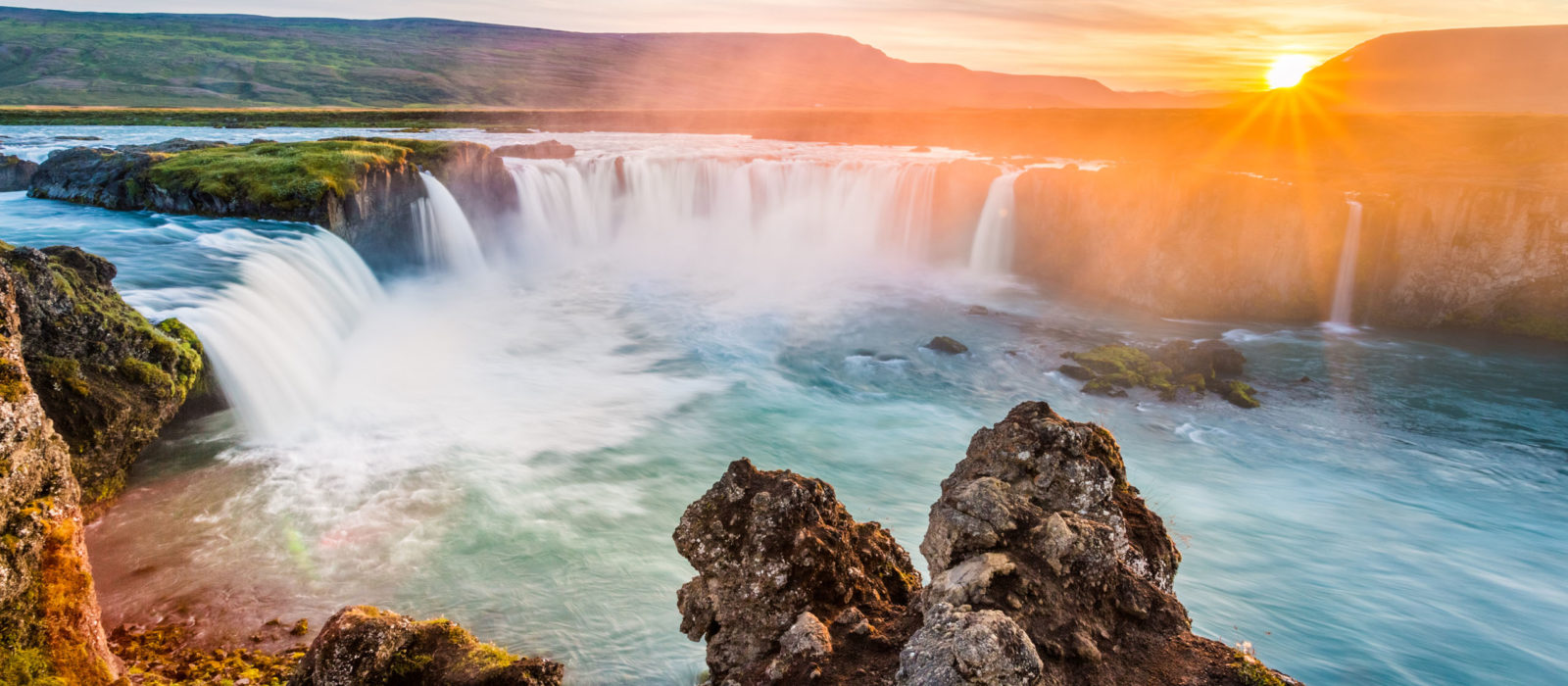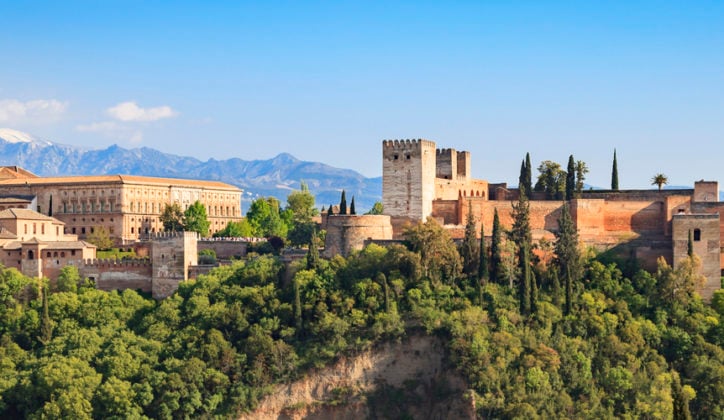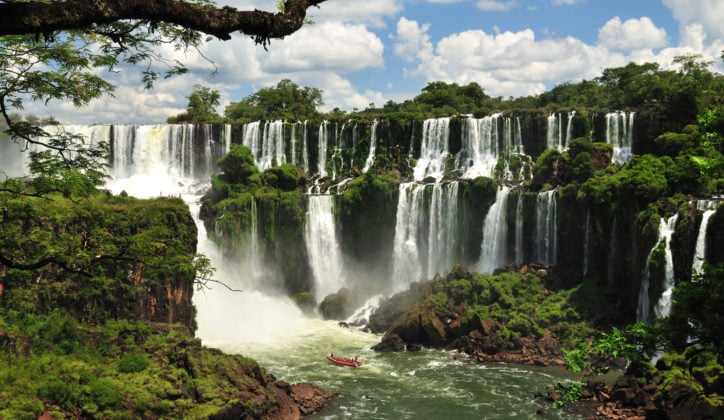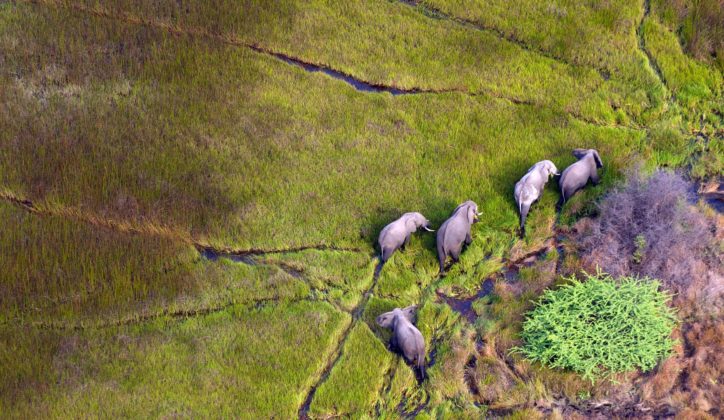Published on: February 5th, 2019
Last modified: December 28th, 2023
Planning a trip is extremely exciting, but with the whole world to choose from it can be hard to narrow down which country it is you want to visit.
The good news is, you no longer have to. With the world only getting smaller, it’s easier than ever to extend your vacation and visit multiple destinations at the same time.
Multi-destination trips are a great way to see more of the world, so we’ve put together this guide on our favourite alternative multi-destination vacations.

For nature: Iceland, Ireland and Scotland
Iceland
While combining Ireland and Scotland with Iceland may not be the most obvious pairing, it’s sure to be an epic journey. Begin your trip in the so-called Land of Fire and Ice, where the Northern Lights illuminate the night sky and thermal hot springs sit around every corner. From capital city Reykjavik to the remote Westfjords, Iceland is a land filled with beauty.
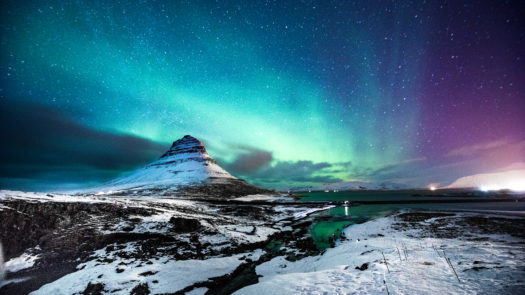
Any trip to Iceland generally starts and ends in Reykjavik, the world’s most northerly capital. There’s plenty to do here; this capital city plays host to a cutting edge arts and culture scene, many a delectable restaurant and beautiful open spaces. The city is split in half by the waters of Tjornin Lake, and the brightly coloured rooftops along every street give Reykjavik a fairytale feel.
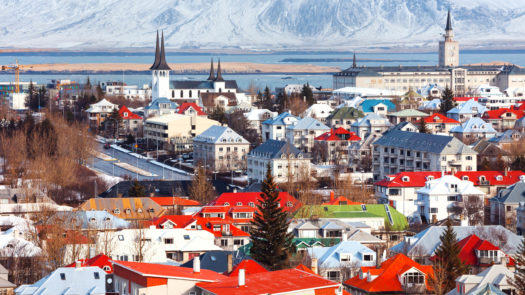
Outside of the capital city, there are several other corners of Iceland to discover. From the Golden Circle to the Icelandic Highlands, every region offers something a little different from one another. The Eastern Fjords are home to Ice Age glaciers, picturesque fishing villages and the country’s largest forest, while the Westfjords region is a harsh environment nestled on the edge of the Arctic Circle.
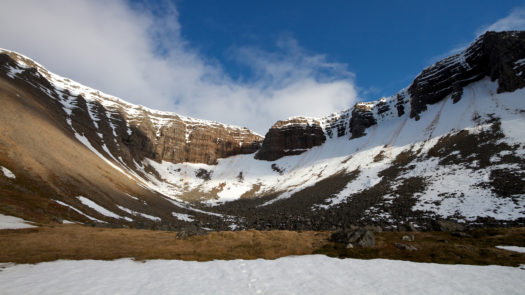
The Golden Circle has earned its name by virtue of the fact that it brings together three of Iceland’s most majestic natural wonders. Thingvellir National Park, Gullfoss waterfall and the geothermal valley of Haukadalur bring the Iceland of the guidebooks to life. The Icelandic Highlands are a polar equivalent to Scotland’s interior, and both the North and South of the country both offer bewitching rural beauty. However you choose to spend your time in Iceland, it’s guaranteed to be an out of this world start to your adventure.
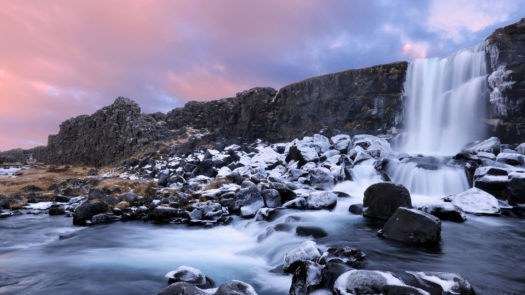
Scotland
Just a two hour flight away from Iceland, Scotland couples historic cities with a less extreme version of Iceland’s natural beauty. A good starting point for a trip to Scotland is one of the two major cities – Glasgow and Edinburgh. Glasgow is home to a vibrant arts scene and edgy architecture, while Edinburgh pays homage to the country’s 200 year old history. On a city tour of Glasgow, travellers can get in touch with their artistic side at Kelvingrove Art Museum and Gallery or delve into the city’s history at the Provand’s Lordship – the oldest house in the city. In Edinburgh, the castle takes centre stage. Visiting this ancient structure that balances precariously on the edge of a volcanic outcrop is a truly once in a lifetime experience.
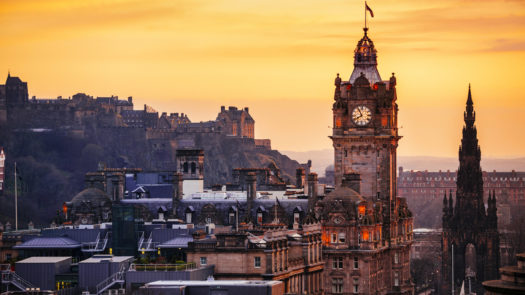
Outside of the major cities, Scotland is filled with ethereal lochs and expanses of verdant countryside. Made famous by the song The Bonnie Banks o’ Loch Lomond, Loch Lomond on the western coast is one of Scotland’s most beautiful freshwater lakes. Marking the beginning of the Scottish Highlands, Loch Lomond is the gateway to an evocative landscape. Striking mountains, exquisite forest and a serene winding coastline come together here to form an area filled with wonderful vistas. Scotland’s beauty knows no bounds and much of the same can be found in the Lowlands. The Lowlands are a great place for adventure enthusiasts; walking, rock climbing and mountain biking are popular here, as well as the more traditional pursuits of fishing and grouse shooting.
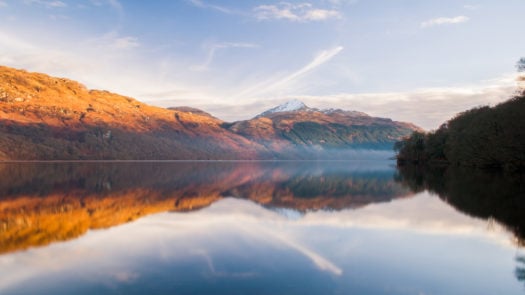
Scotland’s countryside is other-worldly but there are few places more beautiful than the Isle of Skye, located just off the northwest coastline. Covered in rugged landscapes and dramatic mountain scenery, the Isle of Skye looks as though it has been lifted straight from the pages of a magazine. There are only a few roads crossing the island, so Skye is an idyllic escape from the busyness of modern life. There’s a burgeoning arts and crafts scene here too, so visitors can spend time perusing galleries and studios or watching local photographers capture the perfect shot of peaks, valleys and abundant wildlife.
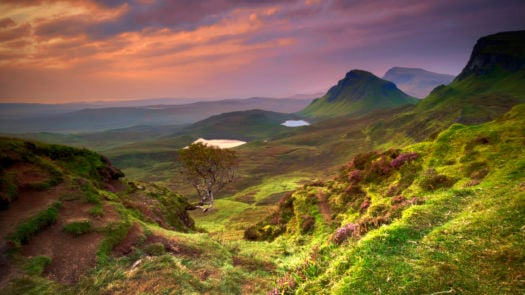
Ireland
Just an hour’s flight away from Scotland, Ireland is an island nation full of historic charm, diverse surroundings and jovial people. Both of Ireland’s major cities have fascinating histories and as a result, there’s plenty to see and do in both Belfast and Dublin. Belfast was at the centre of Ireland’s turbulent 20th century and today, the city’s history is commemorated through various monuments and museums. A standout attraction is the Titanic Belfast museum, which is built over the very slipways where the infamous vessel was built. The museum itself is spread over nine galleries, all telling the story of the Titanic through special effects, dark rides, full-scale reconstructions and interactive exhibits.
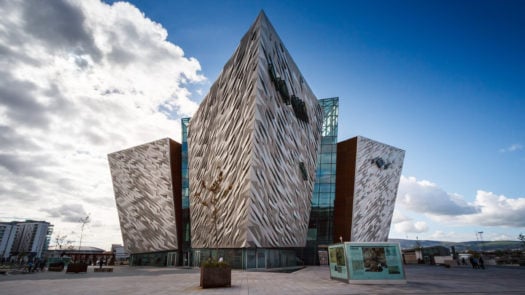
Dublin’s museums are somewhat more traditional but equally as impressive. The GPO Witness History Museum tells the tale of the pursuit of Irish independence, the Natural History Museum showcases an impressive zoological collection and the National Gallery has housed the country’s most precious artworks since 1854. The city also seamlessly marries history with culture. One of the must-visit cultural hotspots is Trinity College’s Old Library. The library is reminiscent of an antique bookshop, transporting travellers straight back to the 18th century. With floor to ceiling bookcases lining the walls, Trinity College’s Old Library is a charming place to spend a day.
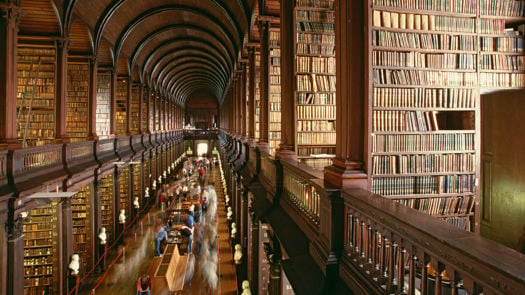
As you venture out into the Irish countryside, the views become more and more beautiful. From the UNESCO recognised Marble Arch Caves Geopark to the world-famous Giant’s Causeway, Ireland has it all. A captivating subterranean playground, the Marble Arch Caves come complete with rivers, waterfalls, lofty chambers and ethereal cave formations. A place of pilgrimage for many travellers, the Giant’s Causeway is equally remarkable. Here, unique rock formations have withstood strong currents for centuries. The rugged symmetry of the stones make this a peculiar place, and strolling along the shore is a mystical experience.
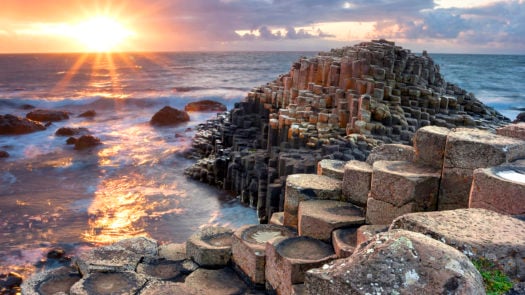

For culture: Spain, Portugal and Morocco
Spain
Barcelona is arguably Spain’s most revered cultural city and it’s easy to see why. It’s the centre of Catalonia’s food scene and Gaudi’s architectural legacy can be found on almost every street. Foodies can head on a walking tour of the city, beginning at La Boqueria – Spain’s most iconic food market. From Iberian ham to swan eggs, all sorts of Spanish delicacies are on offer here. For art lovers, Barcelona doesn’t disappoint. The bright mosaics of Güell Park and La Sagrada Familia attest to Gaudi’s brilliance, while the famed architect’s Catalan Modernist style can be seen across the city. Aside from the classics, watch out for the Casa Batllò and Casa Milà (popularly known as La Pedrera, or the stone quarry).
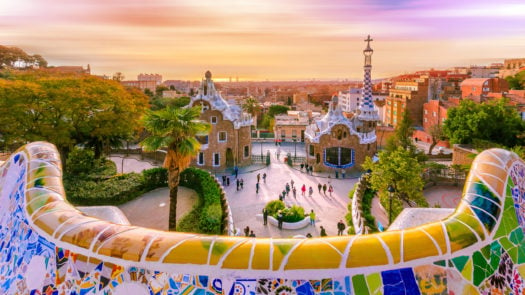
In southern Spain, Seville is one of the best places in Andalusia to soak up some culture. Containing three UNESCO World Heritage Sites, Seville’s Old Town is one of the most stunning in Europe. The Alcazar palace complex, Cathedral and the General Archive of the Indies (or Spanish empire) all offer unique insights into different parts of Seville’s history. Another beautiful wonder here is the Plaza de Espana – a square dating from 1929, built by the architect Anibal Gonzalez in the traditional Regionalist Revival and Art Deco styles.
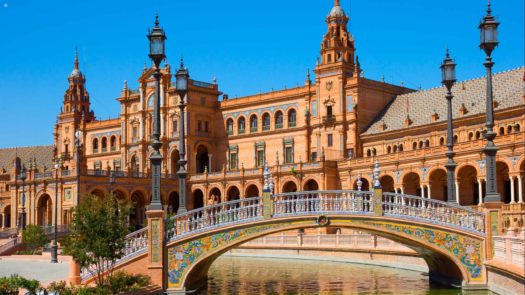
Seville’s sister city Granada is renowned as the last stronghold of the Moors and home to the lavish Alhambra. Granada’s most visited site, this elegant structure was once a palace and fortress for the city’s Muslim rulers. Alhambra means “red fort” and today, the intricately decorated red clay walls are a breathtaking sight. The district that faces the Alhambra, Albaicín, is a world heritage site that houses the remains of an Arab bath complex, Granada’s archaeological museum and the church of San Salvador. Today, Granada’s worldly heritage lives on alongside a tavern-style nightlife, Flamenco dancers and gifted street artists. Whichever Spanish city you choose to start your trip in, it’s bound to be full of culture.
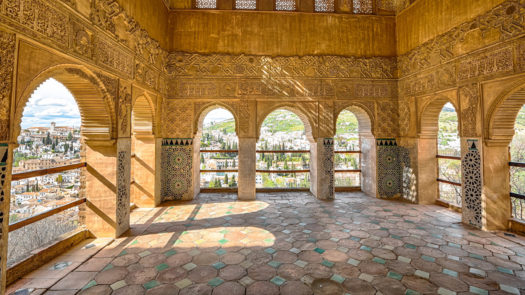
Portugal
Spain’s neighbour is a destination in its own right, but combining it with Spain and Morocco makes for a cultural voyage like no other. Portugal is a land of cultural cities and historic villages waiting to be discovered. Start in the capital city Lisbon, which is full of old-world charm. As Europe’s second oldest capital, Lisbon is home to remarkable monuments and distinctive neighbourhoods. The city was ruled over by three different empires, each of which has left its mark.
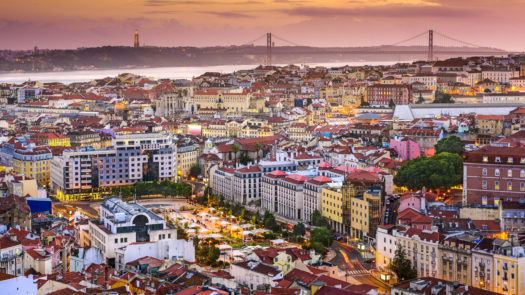
Lisbon’s lower town is characterised by grand 18th-century buildings, while the oldest district Alfama is filled with labyrinth-like streets. Visiting Lisbon feels as though you’ve travelled back in time, with washing hanging from wrought iron balconies and antique yellow trams transporting commuters. The city itself feels like an exhibit, but there’s also a plethora of museums and galleries for visitors to peruse here. For an authentic experience, do as the Portuguese do and tuck into a pastel de nata and coffee in one of the city’s many hilltop cafes.

Portugal’s second city, Porto, is just as exciting. Built on a steep riverbank, the city is filled with colourful medieval houses that line the calm waters of the Douro River. As a city that’s famous for port, it’s not unusual to see people spilling out of restaurants and bars onto the city streets with a glass of the wine in hand. Porto’s districts are home to remarkable monuments; the ancient Baixa district is filled with baroque churches and 19th century palaces.
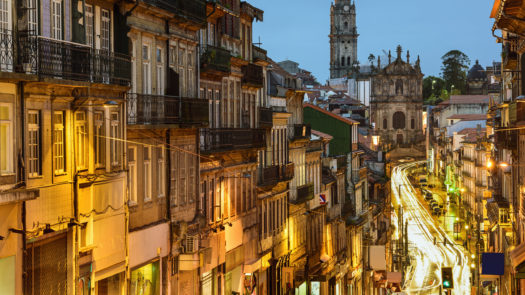
The double decked Dom Luis I bridge arches over the Douro River and links the medieval city with the nearby town of Vila Nova de Gaia. A two-hour drive away from Porto, the Douro Valley is a UNESCO World Heritage protected landscape, famous for producing port. It is also one of the most stunning areas in Europe, a hidden gem sure to amaze anyone who passes through it. With wine tasting, rustic villages and rugged mountains, this slice of Portugal is idyllic. As a country that combines cultural cities and refreshing countryside, Portugal is sure to delight.
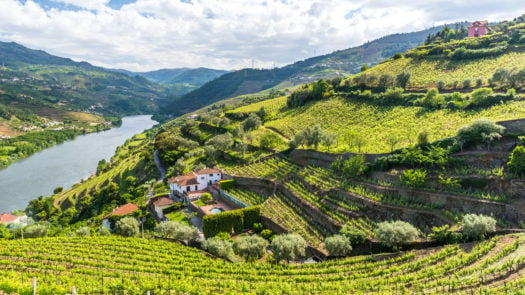
Morocco
Marrakech is world famous for its charming riads, historic medinas and mesmerising souks. This cultural hub is where Morocco’s cultural scene really comes to life, with artisan markets selling everything from fragrant spices to dazzling lamps. Bustling market square Jem-El-Fnaa is the city’s crown jewel, and is an eclectic place hosting storytellers, musicians and performers every night. Marrakech is awash with opportunities to discover traditional Berber culture, while Yves Saint Laurent’s Jardin Majorelle is a pleasant botanical garden to wander through. In the Guilez neighbourhood, impressive palaces flank the kasbah – the lavish El Badi, Bahia and Royal Palaces are all worth exploring.
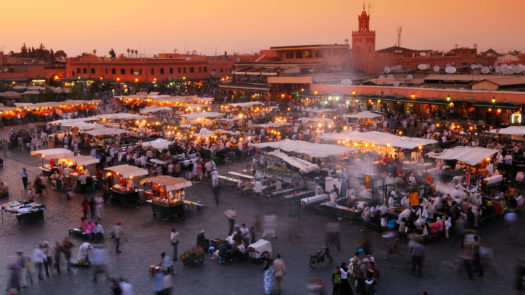
Morocco’s second city, Fes, prides itself on being the country’s cultural and religious capital. Culture is so ingrained in this city that it’s often referred to as the Mecca of the West. Founded in the 9th century, the Fes el Bali district is a fascinating maze of some 9000 alleys. It’s said to be the largest car-free area in the world, with donkeys and hand-pulled carts the preferred modes of transport.
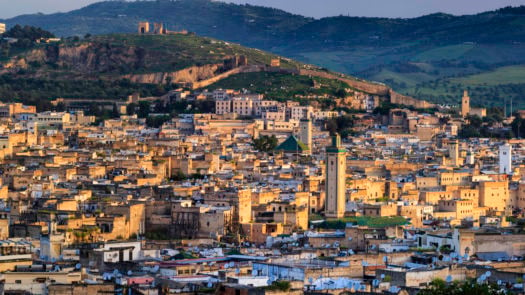
Here, you’ll find the University of Al Quaraouiyine (the oldest degree-granting university in the world), the Bou Inania Madrasa mosque and the Zaouia Moulay Idriss II – a shrine to the city’s founder. In this quarter of the city, it’s easy to see why Fes has long been thought of as the home of imams, artisans and intellectuals. Fes el Jdid, or ‘New Fez,’ was added to the city in the 13th century and houses the vast Royal Palace and the Mellah, or Jewish Quarter, which was home to some 250,000 Jews. The Ville Nouvelle is the newest of Fes’ three districts, dating from the 20th century, and the French colonial influence is clear.
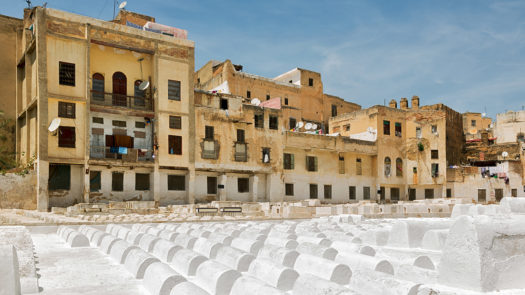
Beyond its cultural cities, Morocco’s landscapes are some of the most beautiful in the world. Spanning three countries in North Africa, the Atlas Mountains are a sight to behold. Filling the space between the fertile Mediterranean coast and the vast Sahara desert, Morocco’s portion of the Atlas Mountains tower over Marrakesh. The tallest peak here – Toubkal – stands at an impressive 4,167 metres (13,671 feet) high. Green valleys, mud-built Berber villages and wadis on the edge of the Sahara are the norm here, making it a haven for hikers of all levels in the months from spring to autumn.
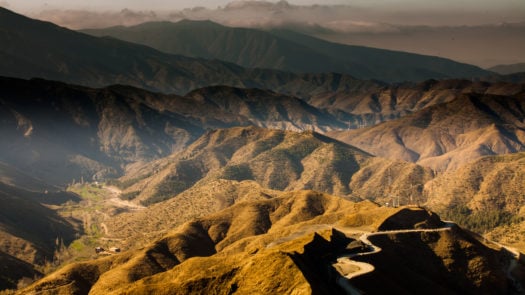
Morocco’s landscape is varied, and the Sahara desert covers a substantial part of the country. Lying south of the High Atlas mountains, the Sahara is characterised by rolling sand dunes and herds of camels led by nomadic blue-scarfed Berbers. Morocco is a diverse nation filled with culture, making it the perfect end point on a journey along the trail of the Moors.
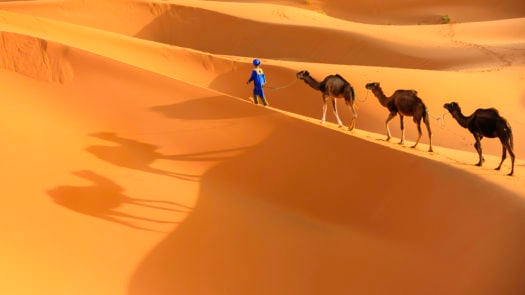

The best of the rest
Thailand, Laos and Cambodia
Southeast Asia offers the perfect beachside escape, and each country in the region offers something a little different. By combining Thailand, Laos and Cambodia, you’ll get a taste of world famous sites, as well as off the beaten track destinations. In Thailand, take in the temples and pagodas of Bangkok, witness the morning chanting ritual of the monks at Wat Pho or spend time interacting with majestic Asian elephants in the northern province of Chiang Rai.
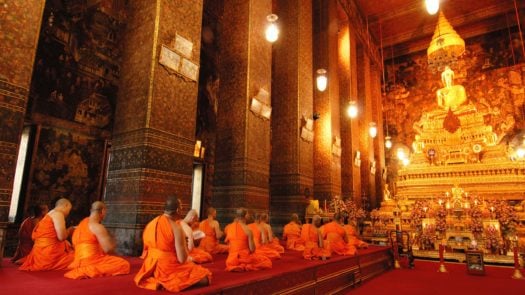
As you head down the Mekong River into neighbouring Laos, you’ll arrive in more remote territory. Stop off in some of the Hmong, Yao and Khmu tribal villages for an authentic experience of local village life. On your way to northern city Luang Prabang, stop off at the enchanting Pak Ou Caves, which are adorned with golden Buddhist statues. Once in the city, travellers can visit the stunning Kuang Si Falls, join monks during their early morning alms giving procession or visit the MandaLao Elephant Sanctuary.
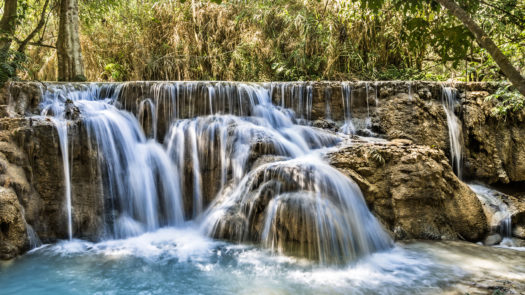
Round off your trip in Cambodia’s Siem Reap, home to the world renowned Angkor temples. Angkor Wat is the most famous of the Angkor temples, but it’s also possible to seek out those that are off the beaten path on a hidden temple hike. In between temple touring, head out into the Cambodian countryside to get a glimpse of local life. Then, enjoy a sunrise tour of Angkor Wat for an epic way to finish your adventure.
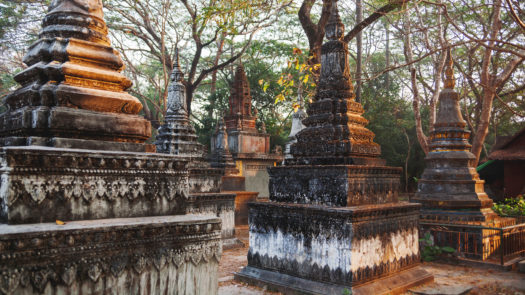
Peru, Argentina and Brazil
Latin America is a continent full of wonders, so why not combine them on a trip that takes in three of Latin America’s fascinating countries? By travelling to Peru, Argentina and Brazil, you’ll be able to tick three world wonders off your bucket list simultaneously. Begin in Peru by catching the train from the ethereal Sacred Valley to iconic Machu Picchu – one of the New Seven Wonders of the World. The Lost Incan City here is one of South America’s most evocative sights, and few ancient sites compare to it.
Continue on to Argentina, where you can find the instantly recognisable Iguassu Falls. A natural wonder of the world, Iguassu Falls straddles the border between Argentina and Brazil. On the Argentinean side of the falls, travellers can meander along the various wooden walkways that lead through the national park, close to the many chutes of the falls. A spectacular sight here is the Devil’s Throat, the part of the Falls which sees the largest flow of water. This giant cascade of water is accessible via hiking trail and a suspended walkway, and it’s well worth the journey.
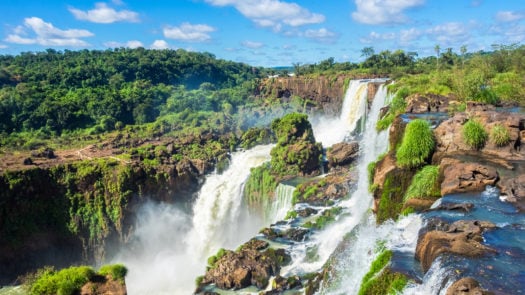
In Brazil, round off your trip in the wonderful capital Rio de Janeiro. This incredible city has an infectious energy, and the last world wonder on your trip is the towering Christ the Redeemer. Standing at 710 metres above the centre of the city on Corcovado Mountain, few things measure up to this devotional statue. The statue of Christ the Redeemer is surrounded by wide, open terraces, so you can round off your trip by drinking in the views of Copacabana beach and Sugarloaf mountain.
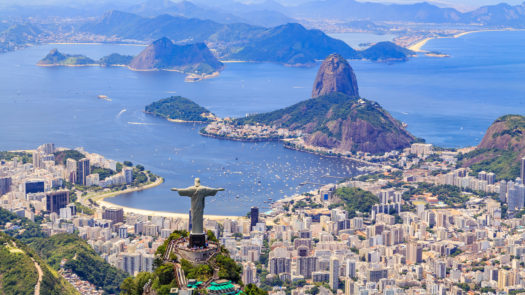
Rwanda, Kenya and Botswana
If you’re planning on visiting Africa, make the most of your trip by combining wildlife encounters that span the length and breadth of the continent. In Rwanda, get up close and personal with mountain gorillas in Volcanoes National Park. There are 10 habituated gorilla groups in Volcanoes National Park, so you’ll never be far away from one of these majestic animals.
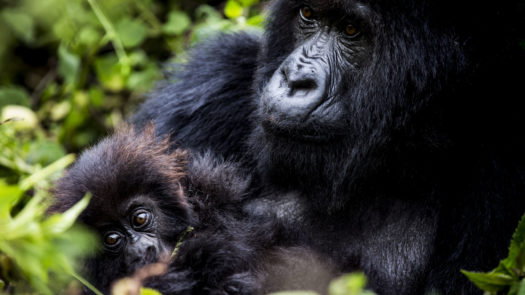
In Kenya, spend your time in the Masai Mara National Park tracking the Big Five. During the Great Migration season, you may even be lucky enough to catch a glimpse of herds of wildebeest making treacherous river crossings. In Botswana, witness the mightiness of Africa’s biggest predators in the Okavango Delta.
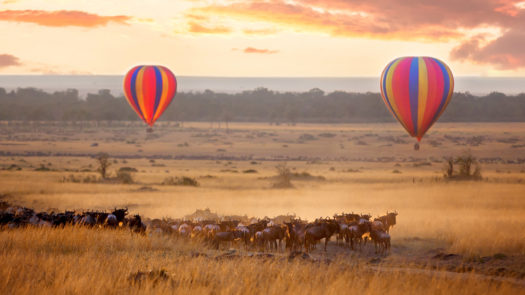
Australia and Papua New Guinea
Australia’s Northern Territory is the closest part of the country to Papua New Guinea, and offers some of the country’s most remote wilderness. Often referred to as the Top End by Australians, this region’s isolation from the rest of the country gives it a unique feel. The Top End is characterised by great canyons cutting through fertile valleys and verdant savannahs coming alive with the sounds of birds and endemic animals. National parks and an Aboriginal heritage make exploring the Northern Territory unforgettable.
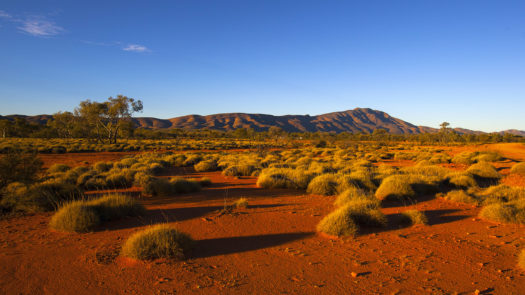
This otherworldly feel continues in Papua New Guinea, which is just a 3 hour flight away from Darwin, capital of Australia’s Northern Territory. Although it’s probably not the first destination that springs to mind when you hear the word ‘vacation,’ Papua New Guinea is a fascinating country. As a land built on an incredible history and extraordinary culture, Papua New Guinea combines its spellbinding heritage with dramatic landscapes to make it one of the most phenomenal places in the world.
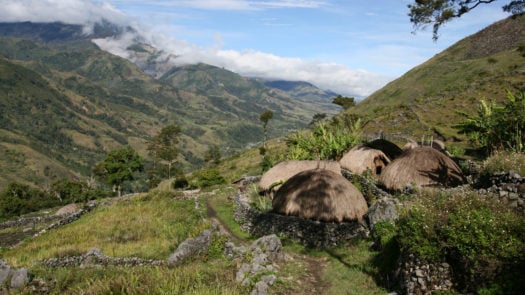
Discover our favourite multi-destination trips
Feeling inspired? Our expert travel designers are always on hand to help you plan your next multi-country adventure.
